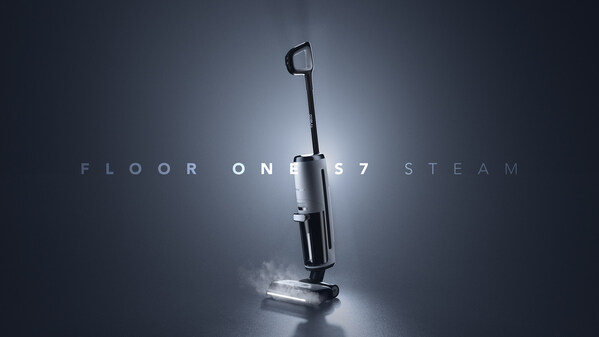Comparing the Roomba i3 EVO and the Roomba i3+ EVO
iRobot Roombas are some of the most popular robot vacuums on the market, but you can pay a pretty penny for advanced models. The Roomba i3 EVO and i3+ EVO, on the other hand, offer many of the same features as high-end robots but at a more affordable price. And still, choosing between the two can be a challenge.
The i3 EVO and i3+ EVO offer 10 times the suction power of the Roomba 600-series robots, so they can clean hard flooring and carpeting well. They also feature smart mapping, so they learn your home’s layout and remember specific rooms for targeted cleaning. However, while the i3+ EVO has a self-emptying base that allows it to empty its internal dustbin and continue cleaning on its own, the i3 EVO’s dustbin requires manual emptying every time it’s full.
The BestReviews Testing Lab put the i3 EVO and i3+ EVO through their paces in real-world conditions to see how well they performed. Ultimately, while they offer the same cleaning performance and navigation features, we recommend the i3+ EVO for those who want a robot vacuum that requires virtually no assistance during cleaning. However, if you want to save a couple hundred dollars and don’t mind getting your hands dirty regularly emptying your robot, the i3 EVO is also a solid choice.
Roomba i3 EVO vs. i3+ EVO specs
The Roomba i3 EVO and i3+ EVO are identical in nearly every way except that only the i3+ EVO can empty itself.
Roomba i3 EVO specs
Testing team checking suction capabilities of Roomba i3 EVO on carpet.
Product specifications
Battery life: 96 minutes | Dimensions: 13.26” L x 13.26” W x 3.63” H | Dustbin capacity: 0.5 L | Weight: 7.44 lb | Navigation software: iAdapt 3.0 | Mapping: Yes | Self-emptying: No | Object avoidance: No | Scheduling: Yes | Selective room cleaning: Yes | Warranty: 1 Year
The i3 EVO has an advertised battery life of 75 minutes, but it cleaned for over 90 minutes during testing before recharging. It is roughly the same size as most robot vacuums and has the exact dimensions as the i3+ EVO, so it can fit under most furniture except those with low clearance. It offers a dustbin capacity of 0.5 liters, one of the largest among the Roombas we tested, which comes in handy because the i3 EVO is not a self-emptying model.
The original i3 and i3+ from 2020 added “EVO” to their names in 2022 when they were upgraded to have smart maps. Using iRobot’s iAdapt navigation software, the i3 EVO learns your home’s layout and remembers the map for future cleaning. That allows it to vacuum more efficiently and clean specific rooms rather than the entire floor. However, it doesn’t have the object-avoidance feature like the Roomba j-series robots, so it can get stuck on items around the house, like power cords, socks and toys.
Roomba i3+ EVO specs
 The testing team checks charging time for Roomba i3+.
The testing team checks charging time for Roomba i3+.
Product specifications
Battery life: 96 minutes | Dimensions: 13.26” L x 13.26” W x 3.63” H | Dustbin capacity: 0.5 L | Weight: 7.44 lb | Navigation software: iAdapt 3.0 | Mapping: Yes | Self-emptying: Yes | Object avoidance: No | Scheduling: Yes | Selective room cleaning: Yes | Warranty: 1 Year
Like the i3 EVO, the i3+ EVO has an advertised cleaning time of 75 minutes. However, when we tested it, its battery ran for 96 minutes before it needed to recharge. It is the exact same size as the i3 EVO and can fit under most furniture. The i3+ EVO’s dustbin is also the same size as the i3 EVO, but it isn’t as crucial in this model because the i3+ EVO is a self-emptying robot that can empty the bin on its own whenever it’s full.
The i3+ EVO also uses iAdapat 3.0 navigation software to learn your home and remember specific rooms for future cleaning. However, like the i3 EVO, it can’t detect obstacles in its path, which means it may get caught on items around the house.
Roomba i3 EVO vs. i3+ EVO: Key differences
- Self-emptying base: The only difference between the Roomba i3 EVO and i3+ EVO is the base that each model comes with. The i3 EVO has a standard Roomba Home Base that only charges the robot, while the i3+ EVO has a Clean Base Automatic Dirt Disposal, which lets the robot empty itself when its internal dustbin is full.
Key similarities
- Battery life: Both the i3 EVO and i3+ have an advertised battery life of 75 minutes but ran for 90-plus minutes during our testing before recharging.
- Suction power: These robots offer 10 times the suction power of the Roomba 600 series, so we found they performed well on most flooring surfaces we tested them on.
- Smart mapping: Both models have advanced navigation software that lets them map and learn a floor plan, so you can send them to clean specific rooms. During testing, they remembered the layout of our testing area well enough to improve cleaning efficiency.
Setup comparison
The i3 EVO and i3+ EVO require the same setup as other Roomba models. Once the robot and base were out of the box, we attached the power cord to the base and plugged in the unit. We then set the robot on the base to charge while we downloaded the iRobot Home app to complete the setup.
The app asked for the QR code on the robots’ Quick Start cards, but the scan didn’t work. Instead, we manually entered the model numbers, so the app could identify them. Next, we connected the robots to our Wi-Fi network, so they were ready to clean. The app lays out all the steps and makes it very easy to get started.
We did encounter one minor issue with these models during setup. They appear to be more finicky regarding how they’re placed on the base for charging. On two occasions, we thought the robots were charging only to discover that they hadn’t been properly seated on the base with their charging contacts aligned. Once we repositioned them in their bases, they had no trouble charging.
Suction comparison
The Roomba i3 EVO and i3+ EVO have the same suction power, and our testing revealed that they handle hard flooring and carpeting, as well as the various types of debris we placed in front of them, in a very similar manner.
The robots were tested mainly on medium-pile carpeting and low-pile rugs. They both easily removed smaller, hard debris, such as coarse kosher salt and kitty litter, capturing nearly all but a few particles in a single pass. However, the i3 EVO and i3+ EVO struggled with larger debris like cereal on carpeting. While they removed most of the cereal on their initial pass, they crushed several pieces, grinding them into the fibers and leaving crumbs behind that required the robot to make a second pass before they were completely removed. They also had difficulty with a clump of pet hair we placed in front of them. They removed more than half of the hair on their first pass but left smaller chunks and loose hairs behind. As a result, they required two additional passes to completely remove all the hair.
The i3 EVO and i3+ EVO did much better with pet hair on hardwood flooring, fully removing a clump in just one pass. Overall, they both had better suction on hard flooring than carpeting. However, they occasionally ran into a problem that most other robots we tested also did — they sometimes blew particles out of their path and didn’t always remove the remaining pieces on the next pass. For example, they blew kosher salt and kitty litter out of the path and needed a second pass to remove those particles. They also sent several pieces of cereal flying out of their path but blew them beneath a nearby table with low clearance that they couldn’t fit beneath.
Ultimately, both models have solid suction but not enough for those who want a robot vacuum to fully replace their standard vacuum. They also struggled a bit with pet hair on carpeting, so we wouldn’t recommend them for pet owners who live in homes with a significant amount of carpeting. The i3 EVO and i3+ EVO work well to keep already-clean floors clean but may not have enough power for heavy crumbs, hair and other debris.
Design comparison
The i3 EVO and i3 EVO+ look identical except for their bases. They are both round and feature the same dimensions. They have a gray and black design but stand out from other Roombas thanks to a textured ring that runs around the top of the robots. We noted that this texture helped hide fingerprints and smudges, so the i3 EVO and i3+ EVO looked cleaner after vacuuming than other Roombas we tested.
Their dustbins are located at the rear of the robots and hold 0.5 liters of debris. Both models have anti-tangle rubber brushes that flex to adjust to different flooring surfaces and prevent hair from tangling around them. After testing, we didn’t find much hair on their brush rolls and could easily remove the few pieces present with our fingers.
Both models have two large, durable side wheels that help them transition easily between flooring surfaces. The front caster wheel also aids in navigation and pops out for easy cleaning.
Navigation comparison
The i3 EVO and i3+ EVO use iRobot’s iAdapt 3.0 navigation software without the aid of a camera like the Roomba i8/i8+, j7/j7+ and s9/s9+ all have. While they still map your home to remember where specific rooms are and how the space is divided, they rely solely on floor-tracking sensors to learn the area. After the robots go out on a mapping or cleaning run, you can view the smart map in the iRobot Home app. You can then adjust the dividers or room labels on the map to make it as accurate as possible.
However, unlike other advanced Roombas, including the i7/i7+, i8/i8+, j7/ j7+ and s9/s9+, the i3 EVO and i3+ EVO can only store one smart map. That means you can’t have a separate map for each floor of your home. As a result, these models work best for apartments or single-story homes.
Additionally, these robots don’t let you create Keep-Out Zones or Clean Zones like the other models, so you can’t customize your cleaning as much as you can with other models. The i3 EVO and i3+ EVO don’t have an obstacle-avoidance feature like the Roomba j-series robots, either. When we placed a handbag, a shoe and a rubber pet toy in their path during testing, they bumped into the objects repeatedly before eventually moving around them. That’s why they may get stuck on items on the floor, including power cords and wires, so you should pick up around the house before sending them out to clean.
Features comparison
The i3 EVO comes with a standard Roomba Home Base, so it isn’t a self-emptying model. When its bin is full, the robot stops cleaning until you manually empty it. If you’re unaware that the bin is full, the i3 EVO’s vacuuming is interrupted until the bin is emptied.
On the other hand, the i3+ EVO comes with a Clean Base Automatic Dirt Disposal. When its bin is full, the robot automatically returns home and activates the suction that pulls the dirt from the internal bin to a dust bag at the top of the base. This bag can hold up to 60 days’ worth of debris and seals itself as you pull it out, so your hands don’t get dirty.
The only drawback to the Clean Base is the noise it makes when it empties the robot, which registers at about 80 decibels (the noise level of the average standard vacuum is 75 decibels). It’s also considerably larger than the i3 EVO’s Home Base — the Clean Base measures 19 inches tall, while the standard base is only 4.49 inches tall.
Both the i3 EVO and i3+ EVO respond to voice commands through a home assistant like Amazon Alexa and Google Assistant. You can ask your robot to “start vacuuming,” “stop vacuuming,” “pause vacuuming” and “return home.” We connected the robots to Alexa and found they were both highly responsive to the commands, reacting within seconds.
Battery comparison
The i3 EVO and i3+ EVO both have an 1,800 mAH lithium-ion battery. They have an advertised battery life of 75 minutes, but they cleaned for more than 90 minutes during testing. Both models have the Recharge and Resume feature, which allows them to return to their base to recharge when the battery is low and then pick up their cleaning right where they left off after charging.
Most Roombas we tested took approximately two hours to recharge when their battery was drained. The i3 EVO and i3+ EVO needed about an hour and 45 minutes to recharge, so they fall in line with other models.
Maintenance
The Roomba i3 EVO and i3+ EVO require the same maintenance to keep them cleaning effectively. iRobot recommends cleaning their brushes once a week — or twice weekly if you have pets. Because they have anti-tangle brushes, you can usually remove any hair from the brushes with just your fingers. Any dirt or debris on the brushes is easy to wipe away with a microfiber cloth. You should also periodically wipe clean the six sensors spanning the bottom of the robots’ front edge to help them continue navigating successfully.
iRobot also recommends cleaning the dustbins and filters regularly. After removing the bin, take out the filter, and rinse the bin in warm water. Tap the filter against the side of your trash can to knock off any debris. Thoroughly dry the bin, replace the filter and reinstall the entire unit in the robot.
The brushes and filters for the i3 EVO and i3+ EVO require regular replacement. iRobot suggests replacing the filter every two months and the brushes every six to 12 months. You can check the Product Health tab for your robot in the iRobot Home app to find out how much time these components have left before needing to be replaced.
Price
The i3 EVO generally costs $349.99 and is available on Amazon. The i3+ EVO usually costs $549.99. You can find it at Amazon, Best Buy and Walmart. Both can often be found at a discount at these retailers, so it pays to keep an eye out for a sale.
Roomba i3 EVO vs. i3+ EVO: Bottom line
The Roomba i3 EVO and i3+ EVO are nearly identical robot vacuums, so you won’t notice much difference in their cleaning performance or navigation abilities. However, the i3+ EVO is a self-emptying model, which means it doesn’t require any assistance during cleaning. If you want a robot vacuum that’s almost entirely hands-off, then the i3+ EVO is for you. But if you’re on a budget and don’t mind emptying your vacuum’s bin when it fills up, you won’t be disappointed with the i3 EVO.
Want to shop the best products at the best prices? Check out Daily Deals from BestReviews.
Sign up here to receive the BestReviews weekly newsletter for useful advice on new products and noteworthy deals.
Jennifer Blair writes for BestReviews. BestReviews has helped millions of consumers simplify their purchasing decisions, saving them time and money.
Copyright 2023 BestReviews, a Nexstar company. All rights reserved.














